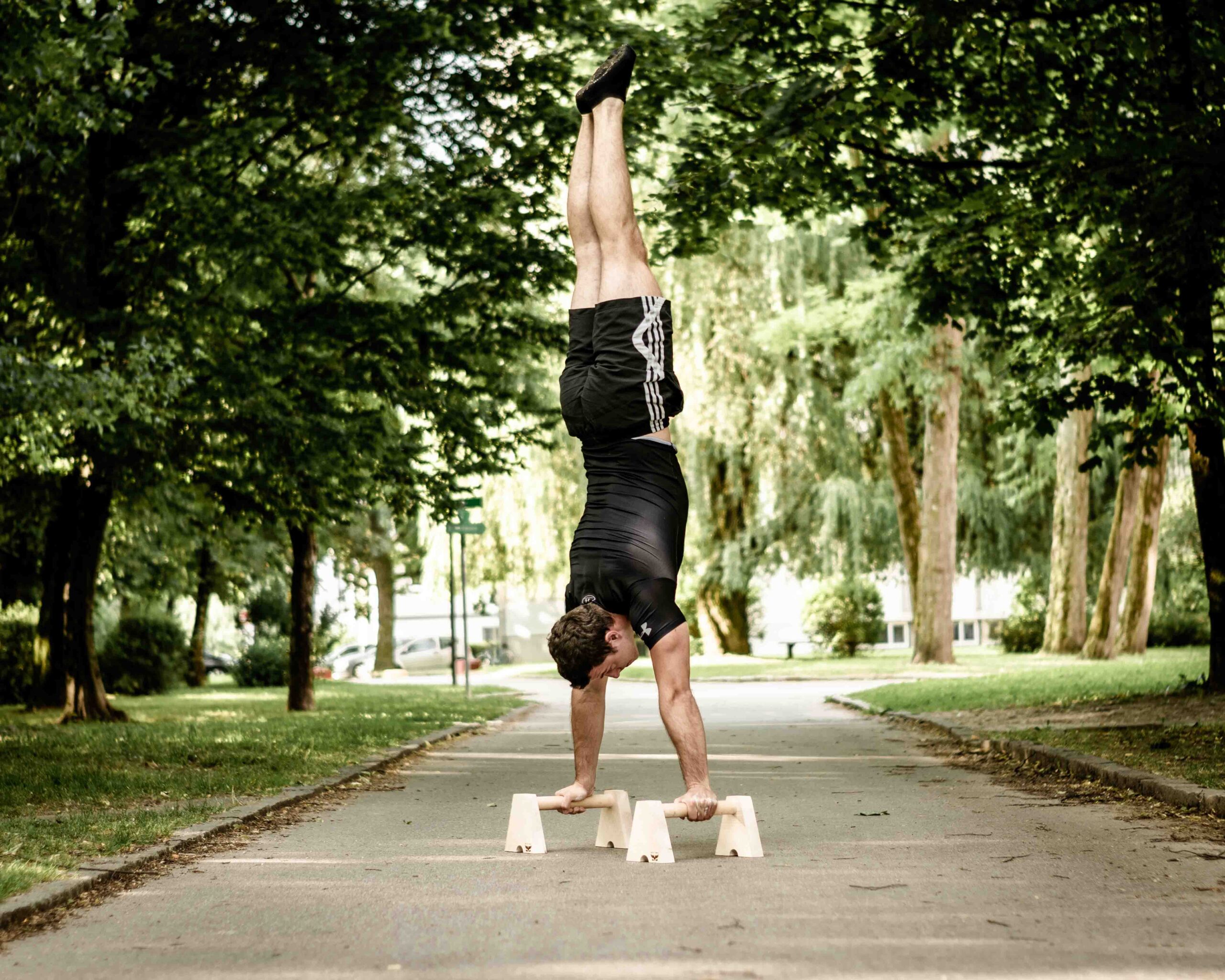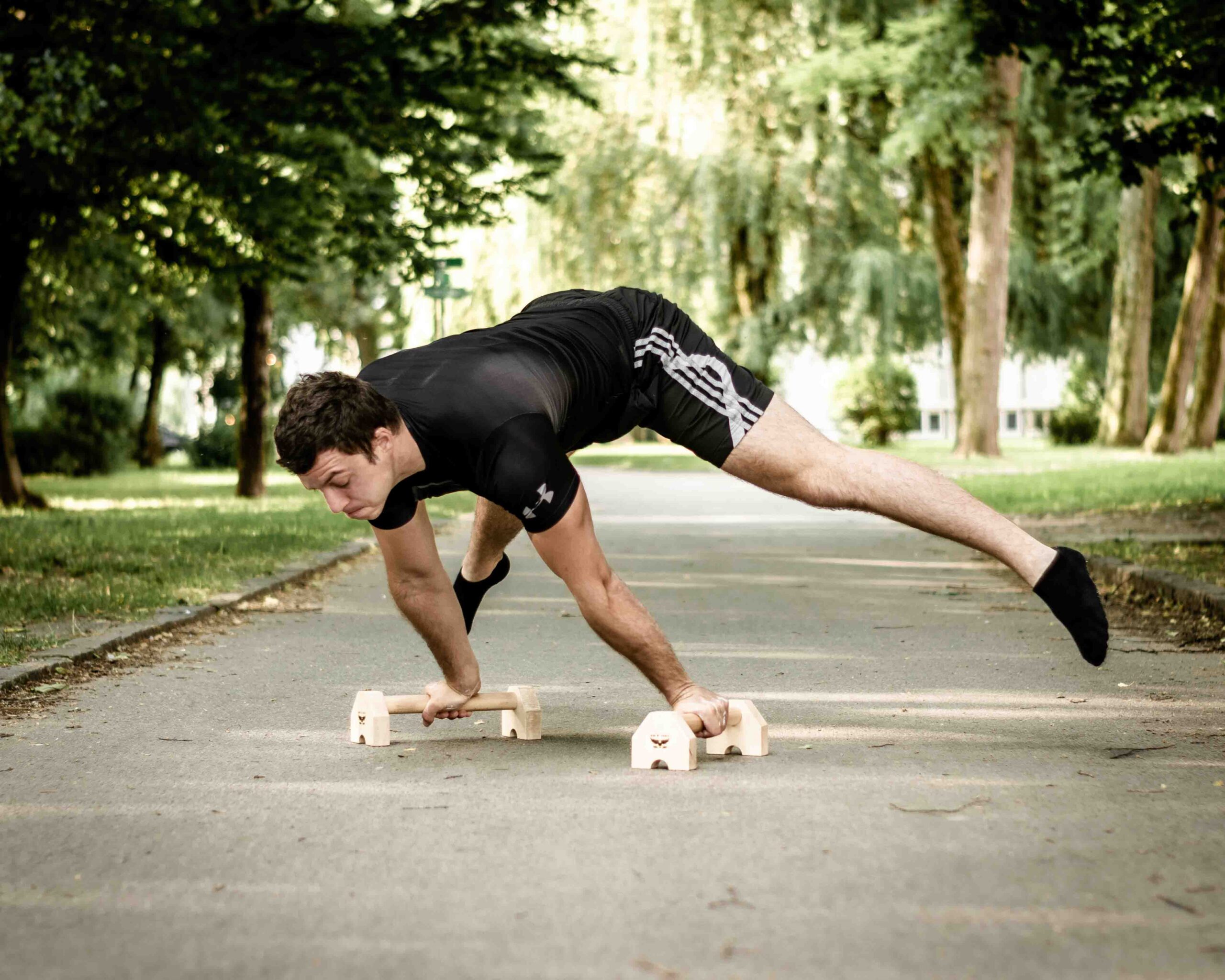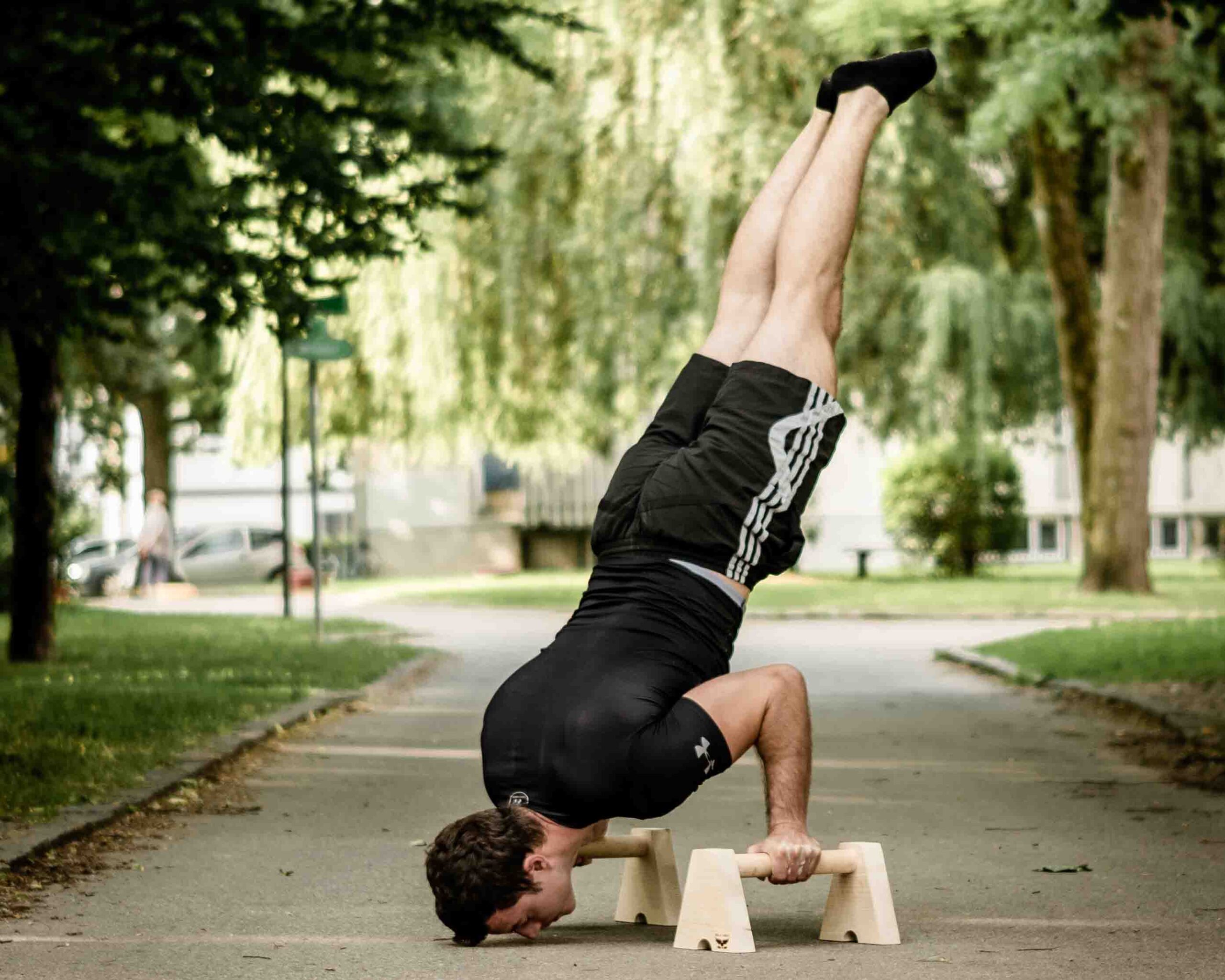Pain free handstands - the reason why I am using parallettes
Pain free handstands - the reason why I am using parallettes
1. The beginning
A few years ago, when I first started my handstand journey I had a lot of problems on how to even stand on my hands, since I could try to jump in a handstand and after just a few seconds I felt a severe tightness and pain in my wrists. Even though I did a decent amount of stretching and my wrists were warm, nothing would help. This was the case for at least a year and a half.
So I searched for a solution, where I could still do hand balancing and have no pain. I started doing handstands on fists and later on I had an idea of making my own parallettes. After making my own out of wood and spending a big amount of time on them, I just got addicted to hand balancing even more, since there was no more pain. This parallettes were the one thing that helped me a lot in my handstand journey. So with practice I could now really focus on my line and different positions in a handstand. After almost 2 years of stretching and focusing on my wrists I am also able to do a handstand on the floor without any pain.

2. Why to do handstands on parallettes?
Well at least in my case it was essential to get my wrists in a position, where I felt no pain. Because the handstand should always feel painless and stacked. Only then I could focus on anything else. Even though the balancing part is a little different than balancing on the floor, the position with the parallettes felt like home to me.
If we speak about balancing, the area of the grip is much smaller than on the floor. But mainly the wrists have to balance mostly in a front-back way, which makes it a little easier compared to balancing on the floor. Also opening the shoulders is a little easier and leaning to the front(towards planch) is much more soothing. Even doing push ups or l-sits is great on them.

3. How to make it harder?
When you spend a considerable amount of time on the parallettes you also want to challenge yourself. We at Oak N’ Eagle have made 3 variants of parallettes which can be used for different things. The first thing to do is to use a narrower surface(using the mini parallettes), which makes it a bit more challenging. The second thing to do is that you can try to balance and jump into a handstand onto a higher surface(using the standard or the high parallettes). If you want the hardest challenge of them all, try to do a handstand on one parrallette.

4. Stretch, stretch and stretch a bit more….
Even though you have achieved a perfect handstand on the parallettes, you should try and get your wrists ready for the handstand on the floor. It will maybe take some time(like in my case), but nevertheless the feeling of improving is so great. I recommend doing wrist warm ups and stretching before every balancing training and also right after. This will make the wrists strong, flexible and ready to tackle a new element.
Subscribe
Sign up to get the latest news on sales, new releases and other special offers delivered into your mailbox.